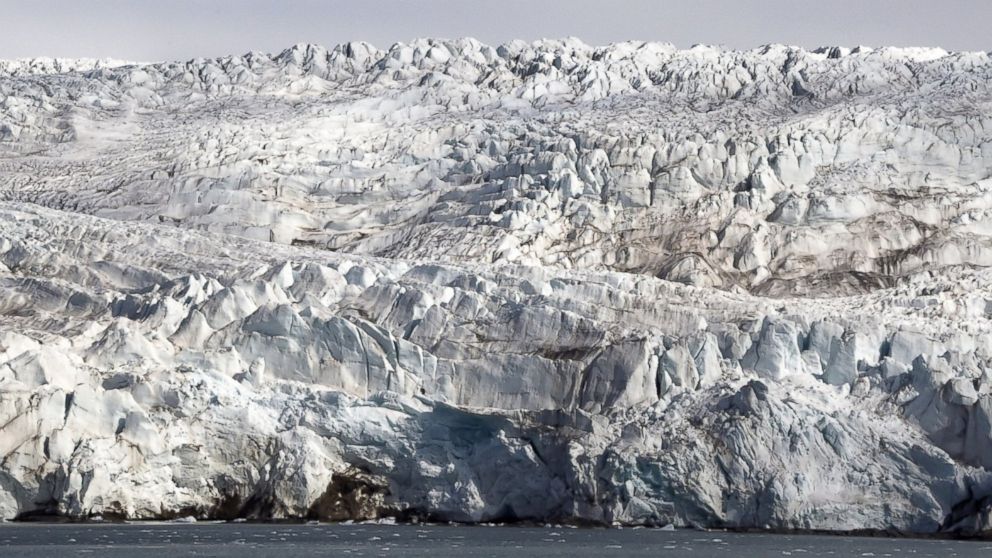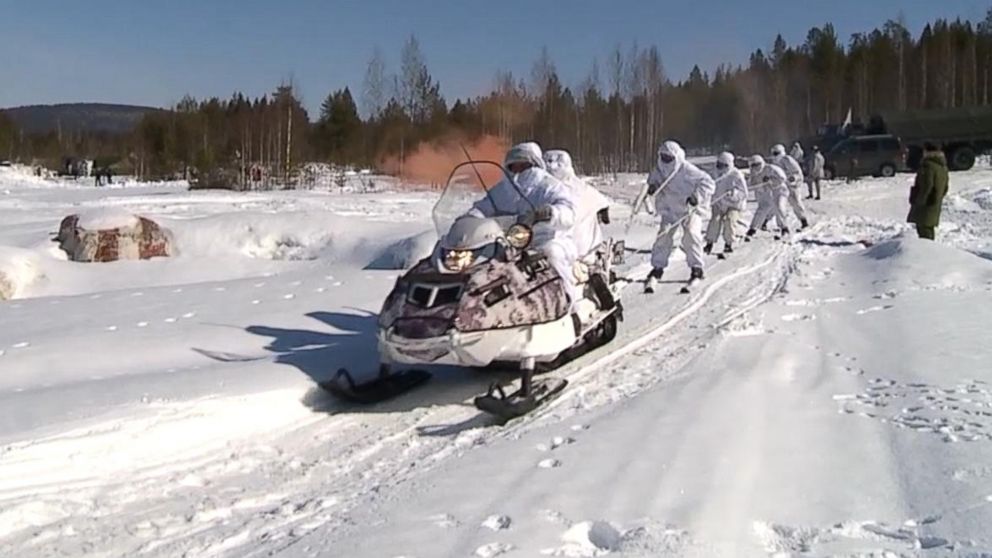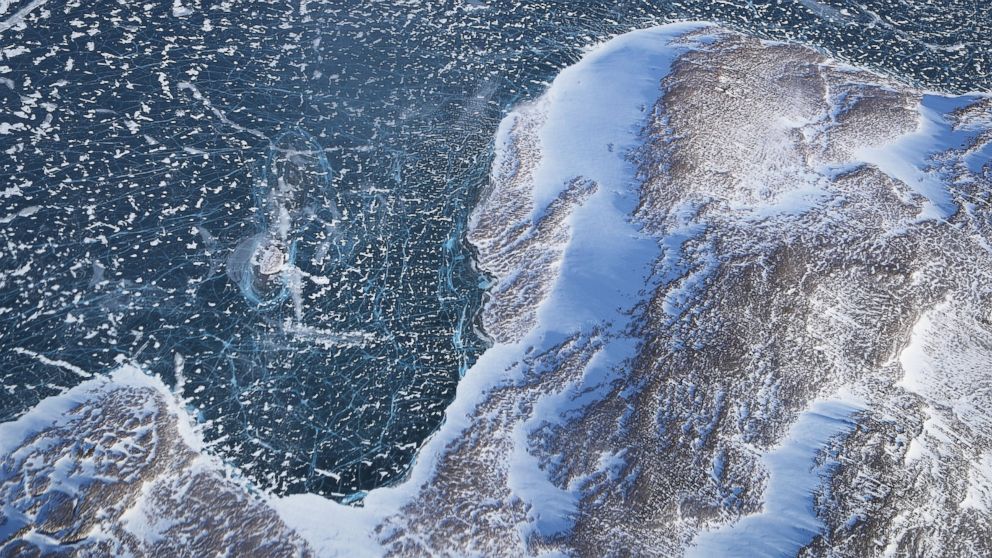The race for the Arctic: as new frontier opens, Russia leaves US in its wake
— -- The Arctic, a mix of vast frozen tundra and expansive seas in the northernmost region of Earth, has become dramatically more complex and appealing to humans.
On Wednesday, U.S. Secretary of State Rex Tillerson will join representatives from each of the eight nations with territory inside the Arctic Circle for a meeting of the Arctic Council, an organization focused on the sustainable development and environmental protection of the Arctic region.
At this meeting, representatives are expected to sign a binding agreement that would increase scientific cooperation in the Arctic, according to the State Department.
But the meeting belies the true race to militarize and exploit an untouched region of increased strategic importance.
As sea ice declines -- largely due to global warming -- valuable waterways have emerged, making it possible to access enormous amounts of untapped natural resources.
Now, Russia is leading the way to stake its claim, leaving the United States in its wake and creating new tensions between the two countries.

Last week, Paul Zukunft, the commandant of the U.S. Coast Guard, warned that Russia was gaining valuable influence in the Arctic by building up its military and industrial presence.
“They’ve got all their chess pieces on the board right now, and right now we’ve got a pawn and maybe a rook,” he told the Center for Strategic and International Studies (CSIS). “If you look at this Arctic game of chess, they’ve got us at checkmate right at the very beginning.”
In the past few years, Russia has invested heavily in building up its military presence in the Arctic, constructing new bases, refurbishing Soviet-era ones and designing communications infrastructure.
Last month, ABC News was one of several foreign media outlets invited to visit the Alakurtti base, one of the refurbished bases located 250 miles from the northern port of Murmansk and on the border with Finland.

While not on the Northern Sea Route, which leads from the Norwegian and Barents Seas to Japan, the base is useful for training forces in Arctic conditions and houses the country’s new “Arctic Brigade.”
A new Russian base on Franz Josef Land, an empty icy archipelago in the Arctic Ocean, boasts 150 personnel and air defense units. It’s Russia’s northernmost installation and will officially be commissioned in the second half of 2017, according to the Russian news agency Interfax.
Three more bases are in the works, in addition to an air defense shield which Russia says will cover much of its northern coast.
Russian officials cite access to natural resources and shipping routes as a primary need for the country's growing military presence.
The U.S. Geological Survey estimates that 30 percent of the world’s untapped gas reserves (108 trillion cubic feet), 13 percent of its oil reserves (about 90 billion barrels) and $1 trillion in minerals lie in the Arctic region.
But there are still challenges associated with harvesting gas and oil reserves. Equipment needs to withstand the harsh climate, and employees expect higher wages to work in such isolated conditions, according to the U.S. Energy Information Administration (EIA).
The eight nations of the Arctic -- Canada, Denmark, Finland, Iceland, Norway, Russia, Sweden and the United States -- also have overlapping and disputed claims of sovereignty, as well as differing expectations for how environmental concerns will be taken into account when extracting natural resources.
Increased transport of oil and gas also raise the possibility of a potential spill or other environmental damage.
Despite these challenges, the ability to ship these resources is becoming easier as global warming opens up shipping routes.

While Arctic routes don’t rival large southern routes like the Panama Canal, they still decrease travel time for the “over-the-pole” transits. Some researchers estimate that by 2030 it will take an average of just 22 days to go from North America and Europe to Japan.
The Northern Sea Route saw 300 different ships conduct more than 1,700 voyages, according to the 2017 Arctic Shipping Forum.
Two-thirds of those ships were Russian and 42 percent transported raw materials, like oil and natural gas. The number of ships transiting the Northern Sea Route is only expected to grow.
"President Putin has taken a personal interest in developing Arctic infrastructure," Andrew Holland, senior fellow for energy and climate at the American Security Project in Washington, D.C., told High North News. "[Russia is] demonstrating to their people and to the world that the Russian military is strong, active and willing to act."
“They’ve made a strategic statement,” U.S. Coast Guard commandant Zukunft agreed.
Zukunft pointed out the disparity in necessary hardware, such as ice breakers that open shipping lanes for commercial and military vessels. Russia has 40 of them; the U.S. has two. To make matters worse, only one of the two ice breakers is available, something Zukunft told CSIS he loses sleep over.
He’s hoping Congress will fund the construction of six new ice breakers by 2023 to counter Russia’s Arctic prominence.
The Department of Defense at least appears aware of its blind spots, acknowledging in a December 2016 report that U.S. forces need to enhance their capabilities in the region.
The report also sends a clear warning to Russia not to overstep its boundaries in the Arctic.
"In light of the Russian violation of sovereignty and territorial integrity of Ukraine, Georgia, and Moldova, and Russia’s efforts to intimidate its neighbors, DoD will continue a robust cycle of training and exercises in Europe under OPERATION ATLANTIC RESOLVE and will continue investments in improved posture and capabilities when needed by the combatant commanders," the report reads.
It's not to say the U.S. has no military presence at all in the Arctic. Thule Air Base in Greenland, the Air Force's northernmost base, houses the 21st Space Wing and 821st Air Base Group.
But if Russia's ambitions are any indication, the race for the Arctic has only just begun.
ABC News' Patrick Reevell contributed to this report.




